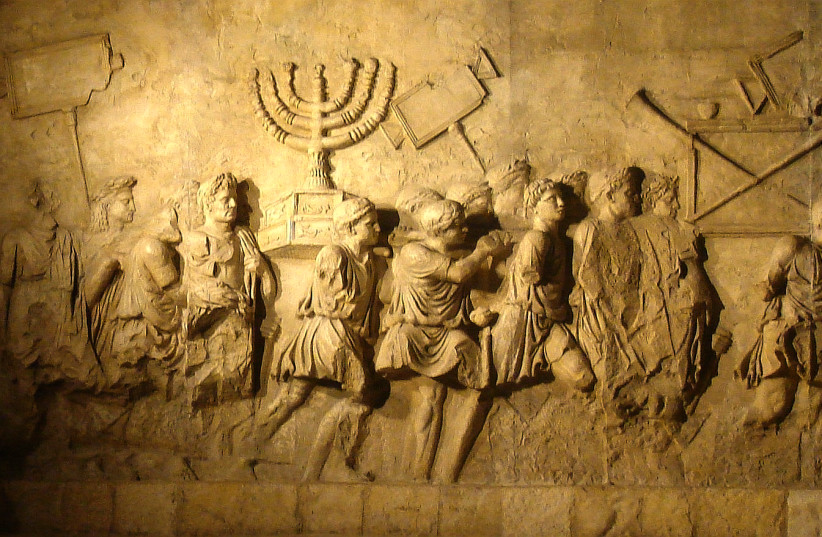When destruction is necessary for rebuilding - opinion

The Temple was destroyed by the decision of God, who could no longer bear what was going on under its roof and thus made the decision to demolish it.
Perhaps the most common insult that gets thrown my way on an all-too-regular basis is “home-wrecker.” In the increasingly hostile world of online talkbacks, my work in directing the Yad La’isha Legal Aid Center for Agunot makes me the target of all sorts of creative attacks. We’re regularly accused of being “progressive,” “man-hating” activists who reject traditional Jewish values, all the while ignoring – or disparaging ־ the fact that our life’s work is dedicated to getting trapped women the freedom they deserve and need to rebuild their lives.
In the face of the term “home-wrecker,” I smile. Indeed, that is in a very real sense our goal.
Our mission is to permanently destroy homes that were scenes of destruction long before we entered the picture. Homes where there is no chance of peace, homes that are abusive and dysfunctional; homes filled with poison, hostility, disrespect, violence and pain; homes where our intervention literally saves lives.
We “destroy” these homes in order to allow the lives within them to live and grow anew.
Just this past week, I met a woman named Hadas. She sat in our office and said candidly, “I know that [my husband] is violent, but I just can’t abandon the fantasy I hold in my mind of a normal family.”
This difficulty is experienced by nearly every woman contending with divorce. Exiting the marriage is accompanied by a real sense of pain, recognizing that the dream that they had under the huppa does not exist and must now be abandoned.
This is the moment when it is important to remember that the ashes of failure fertilize the roots of a new life of hope and happiness.
Tisha Be’av and Jerusalem
Every year on Tisha Be’av, millions of Jews around the world mourn the destruction of the most religiously significant home in Jewish tradition – the Beit Hamikdash, the Holy Temple in Jerusalem. For many, the pain and tragedy of that loss remains ever-present, despite the passage of more than 2,000 years since the embers have grown cold.
Jews continue to lament the loss of traditions like making pilgrimage to Jerusalem on the holidays and the spiritual ecstasy for which those moments were known. Recalling those sacred moments when the high priest would enter the Holy of Holies on Yom Kippur, our people cry out in yearning for the rebuilding of that home.
But the reality is that, toward the end, that home also was imbued with a great deal of “bad blood.” Corruption and internal divisions thrived, leading to deadly civil unrest. Adultery and promiscuity were ever-present. The obvious question that deserves to ask remains – do we really want to return to that dysfunctional home that was destroyed?
The Temple was destroyed by the decision of God, who could no longer bear what was going on under its roof and thus made the decision to demolish it. To anthropomorphize God for a moment, the choice to destroy the Temple was doubtless made out of great pain, but with the understanding that because of all the evil inside of it, it no longer had the right to exist. And if we are willing to put aside the fact that the absence of the Beit Hamikdash deprives us of many sacred rites, perhaps we can acknowledge that the destruction was a necessity of reality and that in the end it did the Jewish people a lot of good.
It removed the mask of lies that took place under the guise of holiness, put an end to the widespread corruption and extremism and enabled us to remove ourselves from the fanaticisms and corruption that had prevailed. It enabled our spiritual growth and forced us to reinvent ourselves. It provided us with an opportunity to develop and an opportunity to build a new home, fixed up and better than the one that was destroyed.
The Beit Hamikdash was not just a physical manifestation of our people’s majesty but a spiritual and cultural one as well. One of its names was the “Beit Habechira,” “the home of the choice.” That choice relates to the decision that we made as a people to forge a bond with God, and the recognition that the strength of this bond is dependent upon the will of both sides. This is perhaps the most powerful metaphor available for any relationship because for a successful relationship to exist, and certainly for it to thrive, both parties must be happy.
Rabbi Yohanan Ben Zakai, who witnessed the Second Temple’s destruction, wrote that the events took place because of “an absence of peace.” Inspired by his words, I, a professional “home-wrecker,” pray for peace – but also recognize that sometimes destruction is the only way for personal, familial, or national redemption to come.
The writer is the director of the Ohr Torah Stone network’s Yad La’isha Legal Aid Center, the world’s largest, most comprehensive and most experienced aguna advocacy organization.
Jerusalem Post Store
`; document.getElementById("linkPremium").innerHTML = cont; var divWithLink = document.getElementById("premium-link"); if (divWithLink !== null && divWithLink !== 'undefined') { divWithLink.style.border = "solid 1px #cb0f3e"; divWithLink.style.textAlign = "center"; divWithLink.style.marginBottom = "15px"; divWithLink.style.marginTop = "15px"; divWithLink.style.width = "100%"; divWithLink.style.backgroundColor = "#122952"; divWithLink.style.color = "#ffffff"; divWithLink.style.lineHeight = "1.5"; } } (function (v, i) { });

